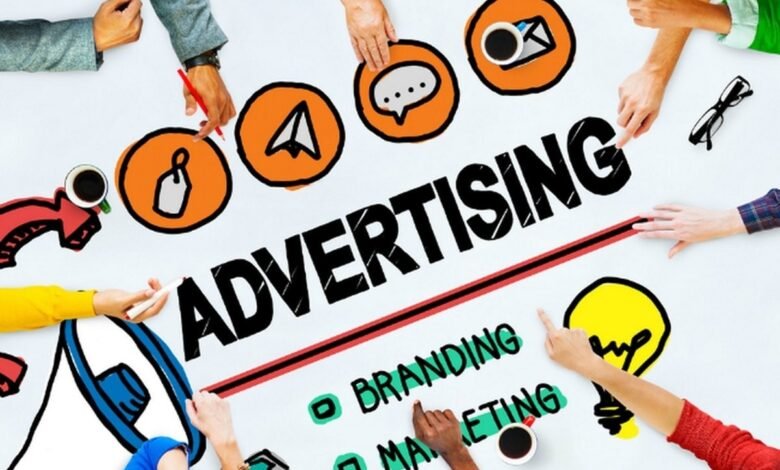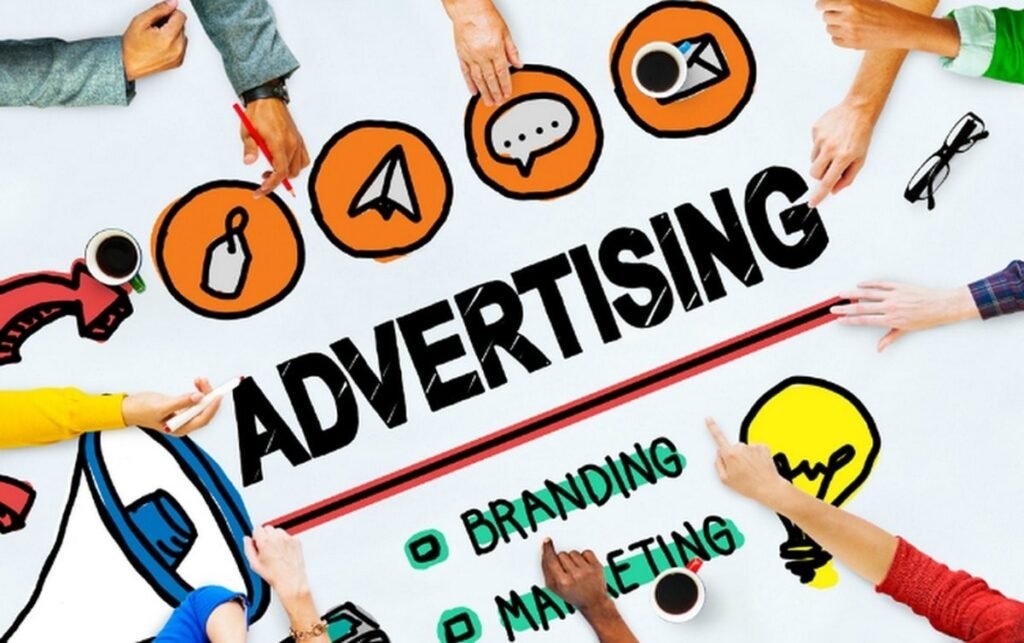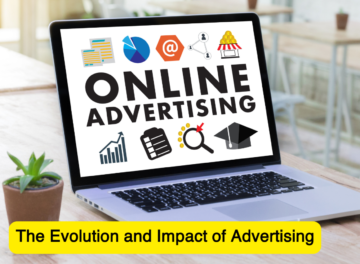How to Create an Effective Advertising


Campaign in the Digital Age
Introduction to Advertising
When I think about advertising, I recognize it as the art of persuading potential customers to purchase a product or service. It involves:
- Crafting compelling messages
- Targeting specific audiences
- Utilizing multiple channels
In the digital age, advertising has evolved significantly. Now, I can leverage:
- Social media platforms
- Search engine marketing
- Email campaigns
Digital tools allow me to:
Refine strategies in real-timeEffective advertising requires understanding the audience’s needs and preferences. The goal is always to convert interest into action efficiently and creatively, using the vast resources available today.
Analyze engagement metrics

The Golden Age of Print Advertising
I remember the days when print advertising was the dominant force in marketing. Newspapers and magazines were the primary vehicles for reaching a broad audience. Ad placements were strategic, and creativity was paramount.
- High-Impact Visuals: Vibrant images and compelling headlines captured attention.
- Emotional Appeals: Advertisements often tugged at heartstrings, encouraging a connection with the brand.
- Innovative Formats: From full-page spreads to fold-outs, print ads offered various engaging formats.
- Targeted Audiences: Publications specialized in particular interests, making it easier to reach specific demographics.
Print advertising was an era of artistry, effectiveness, and influence.
The Advent of Radio and Audio Advertising
I cannot overstate the significance of radio in the history of advertising. With the advent of radio, advertisers found a new medium to reach vast audiences more effectively. The immediacy and intimacy of radio allowed for a direct connection with listeners.
Advantages included:
- Broad Reach: Access to millions simultaneously.
- Cost-Effective: Cheaper production compared to print.
- Engagement: The personal nature of audio creates emotional connections.
Challenges involved:
- Transient: Audio messages are fleeting.
- Measurement: Difficult to gauge return on investment.
This era set the foundation for modern audio advertising methods, including podcasts and digital streaming services.
Television: The New Frontier

Understanding television’s impact in the digital age is crucial. Television has evolved beyond traditional broadcasting. To effectively use television, I integrate these strategies:
- Smart TV Advertising: Using smart TV data to target viewers with precision.
- Cross-Platform Campaigns: Synchronizing TV ads with digital platforms for cohesive messaging.
- Interactive Content: Developing interactive ads for smart TVs to engage users directly.
- Programmatic TV Buying: Employing programmatic methods for automated, data-driven ad purchases.
These techniques allow me to maximize reach and impact, elevating television as a key element in modern advertising campaigns.
Outdoor and Direct Mail Advertising
When considering outdoor and direct mail advertising, I ensure that I integrate these traditional methods effectively with my digital strategy.
Outdoor Advertising
- Billboards: I focus on high-traffic areas to maximize visibility.
- Transit Ads: Buses and taxis offer mobile advertising that reaches diverse demographics.
- Street Furniture: Bus stops and kiosks provide long exposure times.
Direct Mail Advertising
- Targeted Mailers: I use data to personalize content.
- Brochures: High-quality prints can leave a lasting impression.
- Flyers: Cost-effective and versatile, suitable for localized marketing campaigns.
Combining these techniques with digital efforts ensures a comprehensive, multifaceted advertising campaign.
The Rise of the Internet and Early Digital Ads
I remember the early days of the internet, when the first digital ads appeared. The web was still a novel concept, and marketers were eager to explore its potential. The process was new and thrilling, and I often found myself analyzing:
- Banner ads: Simple, static images that were placed on websites.
- Email marketing: Sending direct promotional messages to a user’s inbox.
- Pop-up ads: Windows that opened automatically, often annoying but attention-grabbing.
Platforms like AOL and Yahoo! were pioneers. Each method taught me more about user engagement and the importance of capturing attention fast. Ad strategies evolved swiftly.
Search Engine Marketing and PPC
When I engage with Search Engine Marketing (SEM) and Pay-Per-Click (PPC) strategies, I always start by defining clear goals. I identify the target audience to ensure ads reach the right individuals.
I use keyword research tools like Google Keyword Planner to find relevant keywords. I then create compelling ad copy, focusing on strong calls-to-action. I set a budget that aligns with my objectives and monitor the performance regularly.
To refine campaigns, I perform A/B testing on different ad elements. Keeping track of click-through rates and conversion metrics helps me optimize the ads continually.
The Influence of Social Media on Advertising
In the digital age, social media’s role in advertising is undeniable. I see businesses harnessing platforms like Facebook, Instagram, and Twitter to reach broader audiences.

Key Influences
- Targeted Advertising: Social media allows me to target ads based on demographics, interests, and behavior.
- Engagement: Direct interaction with customers provides immediate feedback, fostering relationships.
- Content Variety: Utilizing videos, images, and stories, I can create more engaging content.
- Analytics: Real-time insights help me measure the success of ad campaigns effectively.
These factors shape how I approach and execute advertising strategies, ensuring they are dynamic and responsive to trends.
Content Marketing and Native Advertising
I focus on creating high-quality, relevant content that speaks directly to my target audience.
Key Steps:
- Identify My Audience: Understand demographics, interests, and behaviors.
- Develop a Content Strategy: Plan types of content like blogs, videos, and infographics.
- Create Engaging Content: Ensure it’s valuable, informative, and entertaining.
- Distribute Content: Use social media, email newsletters, and SEO techniques.
- Measure Success: Track metrics like engagement, shares, and conversions.
Native advertising integrates promotional content seamlessly into the platform. I ensure it matches the tone and style of the host site, making it less intrusive.
Mobile Advertising: Reaching Audiences on the Go
As I develop a campaign, I realize mobile advertising is indispensable. Our lives revolve around smartphones.
- Targeting: I can use location data to deliver tailored ads.
- Formats: Banner ads, video ads, and native ads maximize engagement.
- Platforms: Utilizing social media apps, mobile games, and search engines is crucial.
- Timing: I target ads during peak usage times.
Creating compelling, responsive content is essential. User experience must remain paramount to avoid ad fatigue. It’s about ensuring ads blend seamlessly into their mobile activity. This approach drives conversions effectively.
Video Advertising: YouTube and Beyond
When creating a video ad campaign, I start with YouTube due to its vast reach and targeting options. I craft engaging video content that speaks directly to my audience’s needs and interests. Beyond YouTube, I explore:
- Facebook and Instagram for their powerful video ad placements.
- TikTok for its trendy, fast-paced content.
- Vimeo for higher-quality, artistic videos.
- LinkedIn for professional, B2B video content.
Testing across these platforms allows me to identify which channels provide the best engagement and ROI, refining my strategy for maximum impact.

Programmatic Advertising and AI
When I use programmatic advertising, I leverage AI to automate ad buying and placement. This ensures my ads target the right audience efficiently.
Key Benefits:
- Efficiency: AI optimizes bids in real-time.
- Precision: Ads are shown to the most relevant users.
- Scalability: I can run large-scale campaigns with ease.
Implementation Steps:
- Select a DSP: Choose a Demand-Side Platform that aligns with my goals.
- Define KPIs: Set clear performance indicators.
- Utilize Data: Leverage first and third-party data.
- Monitor and Adjust: Continually optimize based on AI insights.
Harnessing AI in programmatic advertising drives value through automated, data-driven decisions.
Data Analytics and Targeted Advertising
I use data analytics to extract valuable insights that guide my advertising strategies. By analyzing user behavior, I identify patterns and trends that help me tailor my campaigns.
- User Demographics: I collect data on age, gender, and location.
- Behavior Analysis: I monitor website visits, clicks, and duration.
- Purchase History: I review past purchases and preferences.
Targeted Advertising
With insights from data analytics, I create highly personalized ads:
- Segment Audience: I divide users into distinct groups.
- Custom Content: I design ads based on user interests.
- Performance Tracking: I continually refine ad strategies based on results.
Effective use of data empowers my advertising campaigns, ensuring relevance and efficiency.
Challenges and Ethical Considerations
Creating an effective digital ad campaign presents several challenges that I must navigate:
- Data Privacy:
- I need to ensure user data is collected and used responsibly.
- Compliance with GDPR and CCPA is crucial.
- Ad Fatigue:
- Over-targeting can lead to audience annoyance.
- I should vary ad content and schedules.
- Transparency:
- Honesty in advertising is essential to build trust.
- Misleading claims or hidden terms can damage reputation.
- Cultural Sensitivity:
- Ads must respect diverse cultures and values.
- I should avoid stereotypes and offensive content.
Addressing these points ensures ethical, effective campaigns.
The Future of Advertising
I believe the future of advertising is ever-evolving, driven by technology and consumer behavior. Emerging trends include:
- Artificial Intelligence (AI): AI will enable smarter ad placements by analyzing vast amounts of data.
- Personalization: Tailoring ads to individual preferences will become standard, improving engagement.
- Augmented Reality (AR): AR will create immersive advertising experiences.
- Voice Search: Optimizing for voice search as smart speakers gain popularity.
- Ethical Advertising: Increasing consumer awareness will push for transparency and authenticity.
These advancements will redefine how we connect with audiences and deliver more effective campaigns.



Temp Mail There is definately a lot to find out about this subject. I like all the points you made
Temp Mail You’re so awesome! I don’t believe I have read a single thing like that before. So great to find someone with some original thoughts on this topic. Really.. thank you for starting this up. This website is something that is needed on the internet, someone with a little originality!